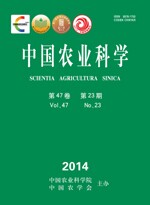【Objective】“Piglet early weaning stress syndrome” brought huge economic losses to the pig industry, immunological stress is one of the important factors. Chaizhukangji particles (CZKJKL) were prepared through modern pharmaceutical technology, total saikosaponins (TSS, the composition of the main therapeutic effects of Bupleuri Radix), polysaccharide of Atractyles macroceohala koidz (PAM, the composition of the main therapeutic effects of Atractylodis Macrocephalae Rhizoma), total glycosides of paeony (TGP, the composition of the main therapeutic effects of Paeoniae Radix Alba)were also selected, and proved that the preparation has a significant mitigation effect on stress of early weaned piglets and stress of early weaning piglets after immunological stress by lipopolysaccharide. The experiment was conducted to investigate the effects of CZKJKL on stress-related neurotransmitters, cytokines and hormones in HPA axis of nerve-endocrine-immune system of early weanling rats after LPS immunological stress, to further explore the anti-stress effects of CZKJKL.【Method】Total 72 early weanling wistar rats at the age of 18 days were randomly divided into 3 treatments of 24 rats each, with 6 replicates in each group and 4 rats in each replicate. The 3 treatments were group Ⅰ(control group), group Ⅱ (LPS group) and group Ⅲ (LPS+CZKJKL group). In the period of 18-24 days of age, the rats in group Ⅲ were fed with 5 000 mg·kg-1BW CZKJKL daily by gavage, the rats in group Ⅰ and group Ⅱ were fed with equivalent amount of sterile saline. At the age of 21 days, the rats in group Ⅱ and group Ⅲ were injected intraperitoneally with 4 mg·kg-1BW of LPS, the rats in group Ⅰ were injected with equivalent amount of sterile saline. Blood and tissue samples were obtained at the time of 6 h after injecting LPS. The following indicators were determinated: The contents of NE,5-HT of Hippocampus; the contents of β-EP, CRF of Hypothalamus; the contents or activities of β-EP, ACTH, COR, IL-1β, IL-6, TNF-α, NO, and iNOS of serum.【Result】Compared with groupⅠ, the contents of NE and 5-HT in hippocampi of groupⅡ were significantly increased (P<0.01), the levels of β-EP in hypothalamus were significantly increased (P<0.01), the contents of β-EP, IL-1β, IL-6, TNF-α, NO, ACTH, and COR in serum were significantly increased (P<0.01), and the activity of iNOS in serum was significantly enhanced (P<0.01). Compared with groupⅡ, the contents of NE and 5-HT in hippocampi of group Ⅲ were significantly decreased (P<0.01), the levels of β-EP in hypothalamus were significantly decreased (P<0.01), the contents of β-EP, IL-1β, IL-6, TNF-α, NO, ACTH, and COR in serum were significantly decreased (P<0.01), and the activity of iNOS in serum was significantly reduced (P<0.01).【Conclusion】The results indicate that CZKJKL can play a role of anti-immunological stress by efficiently alleviating the disorder of stress-related neurotransmitters, cytokines and hormones in HPA axis of nerve-endocrine-immune system of early weanling rats after LPS immunological stress.









